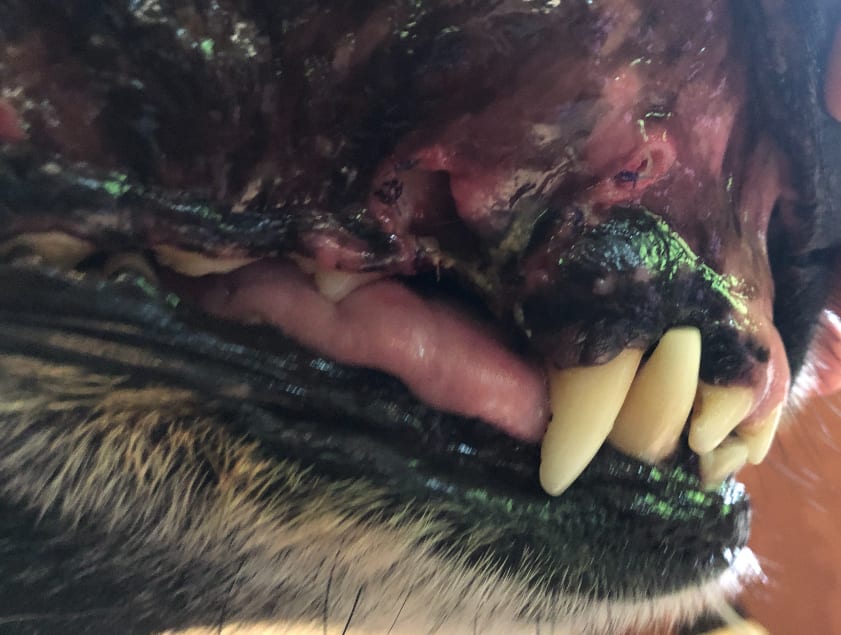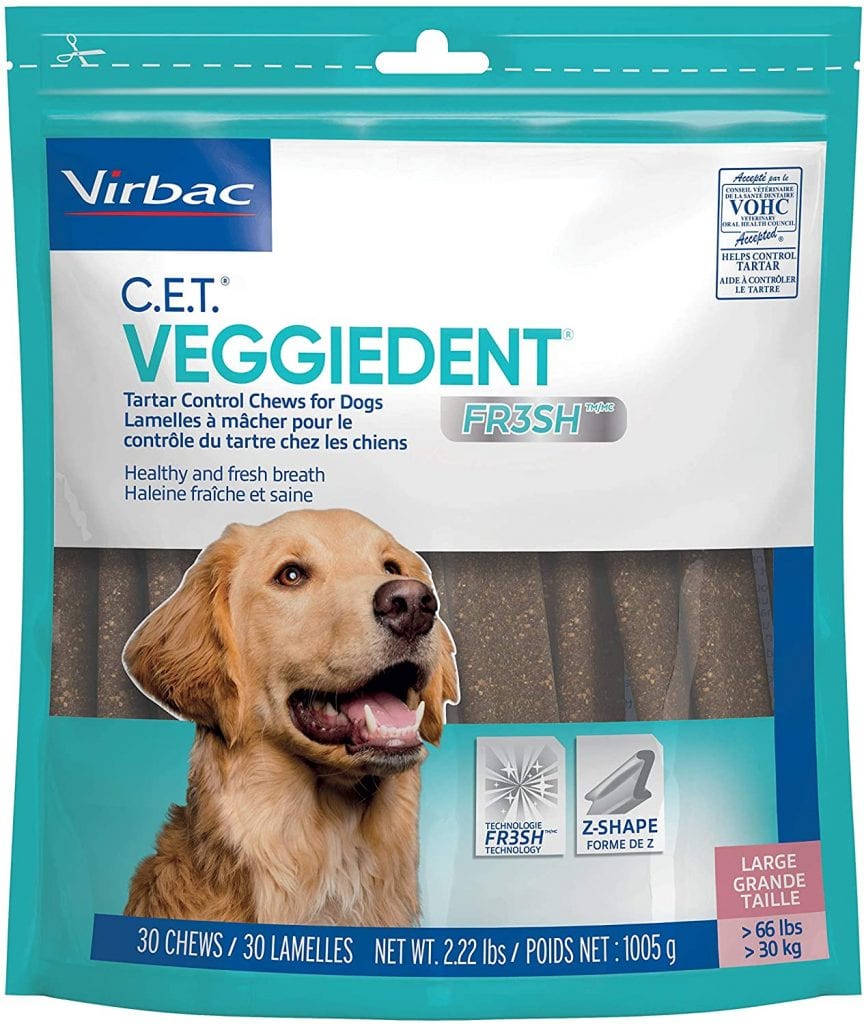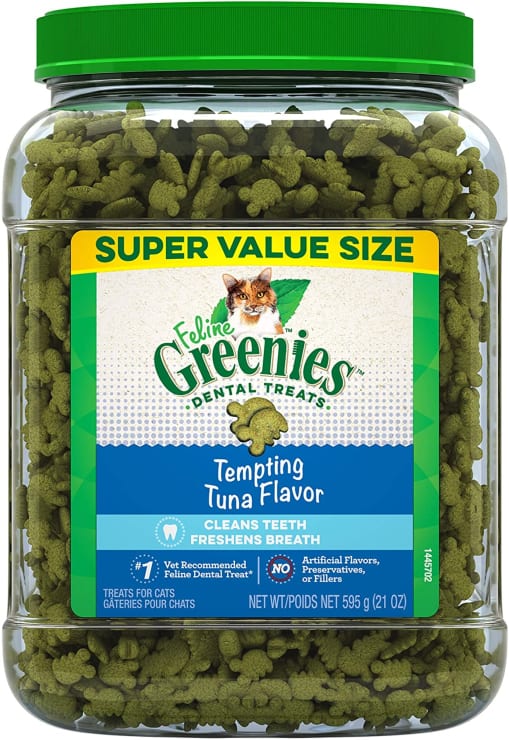February is Pet Dental Health Awareness month. This top dental health tip for Tripawds (and four-legged pets too!) is a great way to show your dog or cat how much you love them!
What is the Most Common Health Problem Cats and Dogs Share?

Believe it or not, the number one health problem dogs and cats share is periodontal disease. After all, even the smartest dog and most talented cat cannot brush their own teeth. And most pet parents are too busy to do it for them.
FACT: by three years old, most dogs and cats already show signs of dental disease!

Caring for a dog or cat’s teeth is a lot like caring for ours (only we don’t floss their teeth!). They get plaque build-up just like we do. To get rid of it, see your vet.
Remember, if you see tartar on your pet’s teeth, it doesn’t necessarily mean your dog or cat has dental disease. The real damage usually happens below the gum line. Only your vet can diagnose any problems.
FACT: If left untreated, periodontal disease can lead to chronic pain and suffering
Dental disease signs in cats and dogs include:
- bad breath
- yellow tartar buildup on the teeth
- red and swollen gums.
Unfortunately, a periodontal disease diagnosis in pets often comes too late to reverse the damage. Broken teeth and infected gums can harm many parts of a pet’s body. Periodontal disease can:
- Cause jaw bone loss
- Loosen teeth
- Send infection throughout the body
- and cause irreversible organ damage
The #1 Dental Health Tip for Tripawds
Bet you thought we were going to say “Learn how to brush your pet’s teeth,” right?
Nope! Because let’s face it: most people don’t have time or are unable to brush their pet’s teeth every day. Pet treats approved by the Veterinary Oral Health Council pet treats are a good start, but it’s not enough.

That’s why An oral health care exam during every physical examination by your vet is the best way to prevent periodontal disease in cats and dogs.
Your vet will look for signs of dental disease. Sometimes your pet will need a professional cleaning, sometimes they won’t. When it’s time for a cleaning, your vet will remove plaque and tartar pretty much the same way a human dental hygienist works on people.

FACT: Without anesthesia, serious pet dental problems can be missed.
Have we convinced you to take better care of your pet’s dental health? Good! But whatever you do, please don’t take your pet for an “anesthesia-free pet dental cleaning” at a groomer. Real dental damage happens below the gum surface. A veterinarian has the skills to get into those places–not a groomer!
White Tripawd teeth do not mean a clean and healthy mouth!
According to the American Veterinary Dental College,
Because your pet wasn’t under anesthesia, there was no ability to clean beneath the gumline where the bacteria that causes periodontal disease occurs and causes bad breath and extensive damage to tooth roots and supporting bone structure.
Although a professional dental cleaning requires general anesthesia, don’t be afraid of it. The procedure is usually less than 15 minutes and pets typically go home the same day. The risks of not undergoing anesthesia far outweigh the risk of a professional veterinary dental cleaning.
Now that we shared our #1 tip it’s important to say that learning how to brush your pet’s teeth is the second best dental health tip for Tripawds. Yes, you can do this!
We hope that our #1 dental health tip for Tripawds will get more three-legged cats and dogs into the dentist chair every year. Dental disease is expensive, and we want you and your pet to avoid the high cost of dental disease in pets.